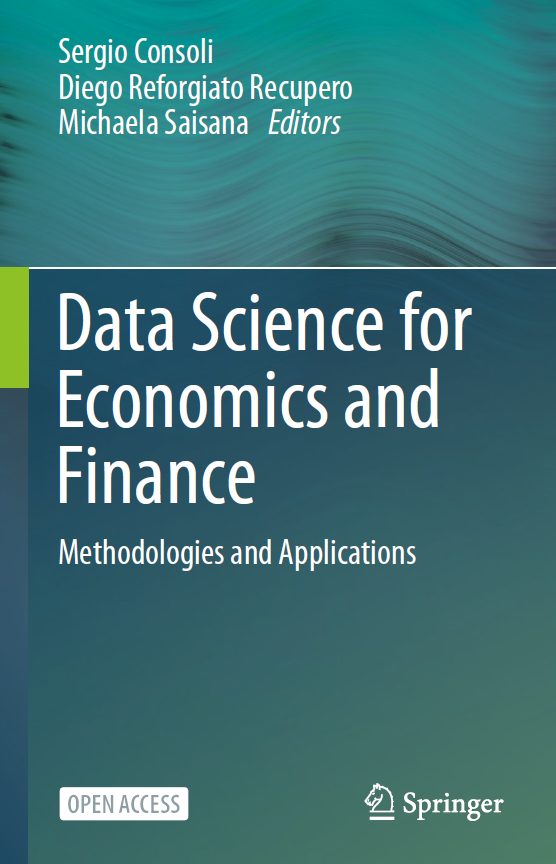 This post is to share with you the recent publication of the book: “Data Science for Economics and Finance: Methodologies and Applications“, by Sergio Consoli, Diego Reforgiato Recupero, and Michaela Saisana.
This post is to share with you the recent publication of the book: “Data Science for Economics and Finance: Methodologies and Applications“, by Sergio Consoli, Diego Reforgiato Recupero, and Michaela Saisana.
The use of data science and artificial intelligence for economics and finance is providing benefits for scientists, professionals and policy-makers by improving the available data analysis methodologies for economic forecasting and therefore making our societies better prepared for the challenges of tomorrow.
This book is a good example of how combining expertise from the European Commission, universities in the U.S. and Europe, financial and economic institutions, and multilateral organizations, can bring forward a shared vision on the benefits of data science applied to economics and finance; from the research point of view to the evaluation of policies on the other hand. It showcases how data science is reshaping the business sector. It includes examples of novel big data sources and some successful applications on the use of advanced machine learning, natural language processing, networks analysis, and time series analysis and forecasting, among others, in the economic and financial sectors. At the same time, the book is making an appeal for further adoption of these novel applications in the field of economics and finance so that they can reach their full potential and support policy-makers and the related stakeholders in the transformational recovery of our societies.
The book is entirely published as Gold OA to reach a large audience. Here are the links:
https://www.springer.com/gp/book/9783030668907
https://link.springer.com/book/10.1007%2F978-3-030-66891-4
This book follows up another previously published Springer volume titled: Data Science for Healthcare: Methodologies and Applications, which was co-edited by Sergio Consoli, Diego Reforgiato Recupero, and Milan Petkovic, that tackles the healthcare domain under different data analysis angles.
Considering the number of recent initiatives that are now pushing towards the use of data analysis within the economic field, we are pursuing with the present book at highlighting successful applications of data science and artificial intelligence into the economic and financial sectors.
We believe the topics dealt by the book to be extremely relevant nowadays within the scientific community, and that the book would be an interesting read for the related audience to let them be acquainted with the latest advancements on these subjects.
